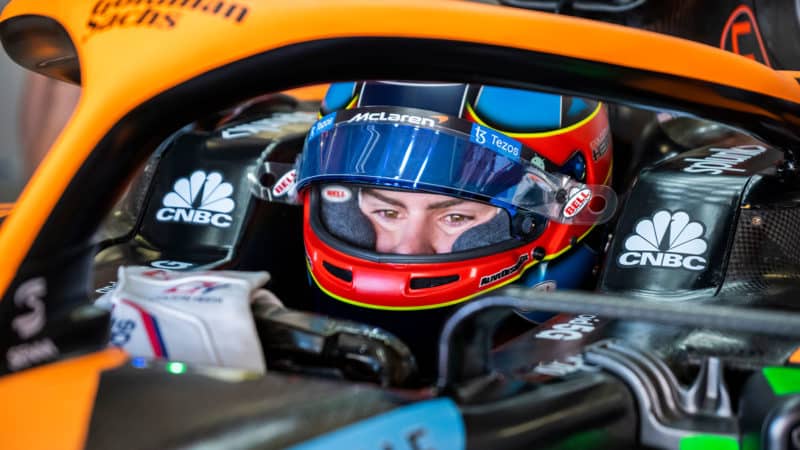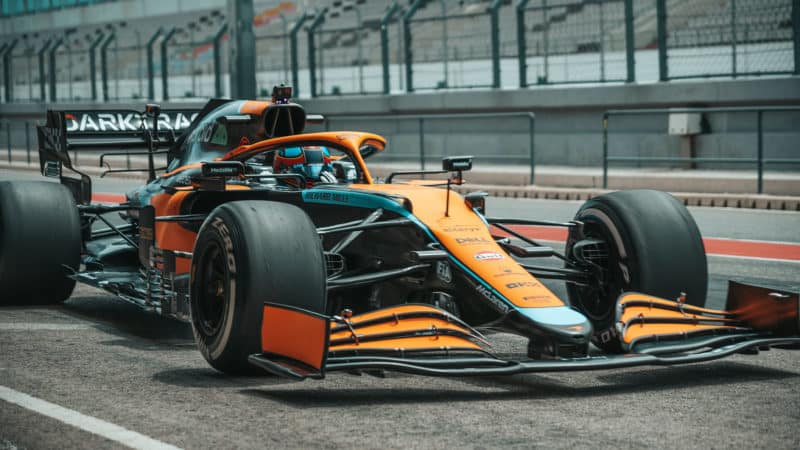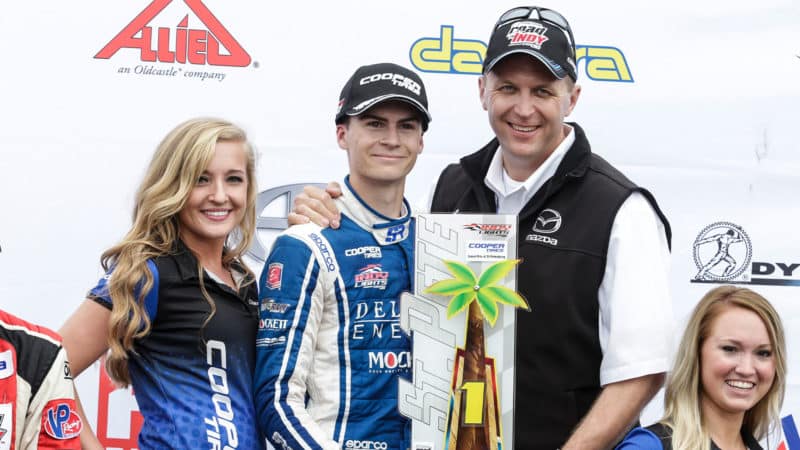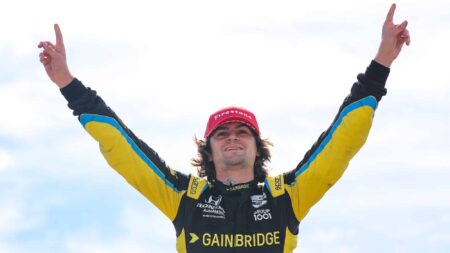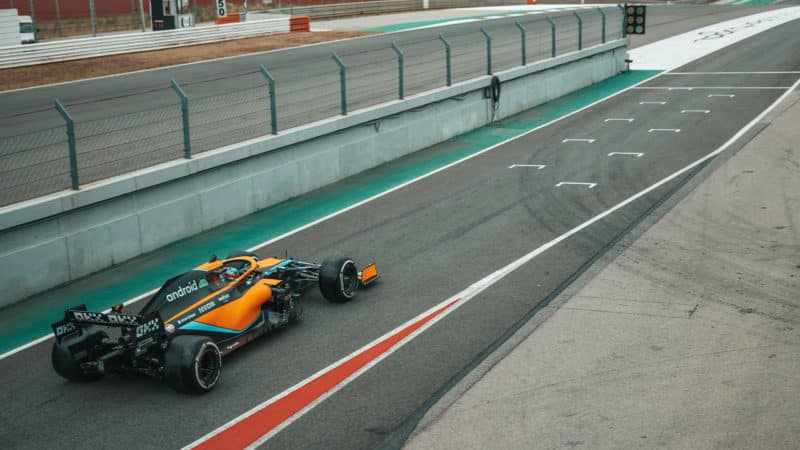The point is those two years in Europe, at age 15-16 when any youngster is absorbing so much, have provided him with a crucial taste of European racing culture. And that has to give him a huge advantage if he does make the transition.
“It was awesome having Lando as a team-mate in 2015 at Carlin,” he said. “We still have stayed in touch a little bit, and I’ve gotten to see him at few races that I’ve gone to in F1. And for sure, my days with Carlin and being over here racing in Europe definitely helped prepare me. I got to see a lot of the European tracks, which is a big thing.
“And obviously, the way people discuss race cars is different all around the world, for sure. So having a little bit more of an insight, it helped me because I didn’t know what kilos and metres were before I came over here in 2015. So I had a little bit better understanding of when they say brake 10 metres later how far that actually is!”
In 2017 instead of moving up into either FIA F3 or what was then still GP3 he returned to the USA to run in Indy Lights, before graduating to IndyCars for the 2018 season finale. The following year he became the category’s youngest ever race winner when he triumphed in Austin in only his third ever start.
He’s now in his fourth full season in IndyCars, and at 22 he has run 57 races, winning seven of them. It’s a decent amount of experience of big, powerful cars and in a highly competitive environment. And you can argue that it’s comparable with the 71 F1 starts logged by Norris, who is just four and a half months older.
Along the way Herta has also had a taste of sportscar racing, contesting Daytona four times, and Sebring twice. All of that has fed into his personal database.
And like any son-of he’s absorbed knowledge from being around his father. Bryan Herta was a decent driver in his time, winning two Champcar races in 1998-’99 driving for Bobby Rahal, and subsequently logging two IndyCar victories during a four-year stint with Andretti Green that ran from 2004 to 2006. Latterly Herta Sr been both a team boss and driver coach, and he is thus the ideal guy to guide Colton on his way.
The youngster is smart enough to know that Portimao was all about playing the long game, and not trying to do eye-catching lap times on the first morning.
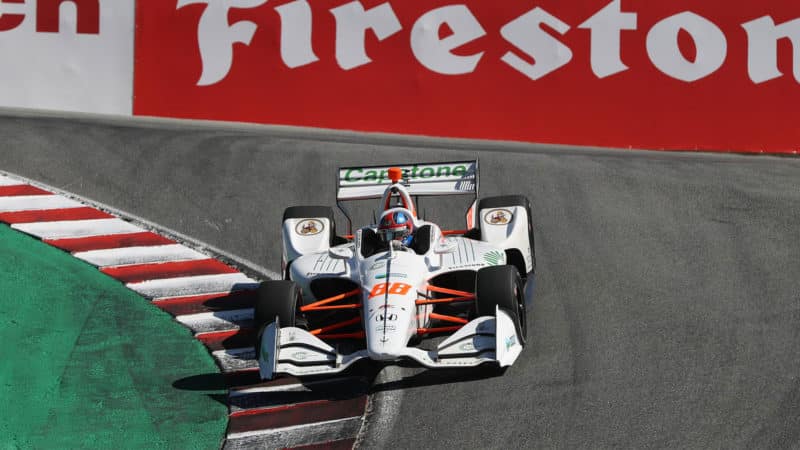
Herta shot to prominence in his first full IndyCar season in 2019, winning at COTA and Laguna Seca (pictured)
IndyCar
“I mean, it’s hard to get in a race car and not drive it as fast as possible, or as fast as you possibly can,” he noted. “But really the goal, when I got over here, was to get acclimated, get up to speed, and really see what I could do in the race car.
“It was a car that was super special, that handled beautifully. I was able to make some set-up adjustments in the afternoon and get it more to my liking and stuff.
“It was a good test to kind of see what these cars are all about. And see the physicality, the differences to an IndyCar.”
Herta had some interesting comments on the comparison between what’s he’s used to and the McLaren.
“The torque is pretty incredible – even when you’re in low RPM, it still pulls” Colton Herta
“I think the first thing was letting off the pit lane speed limiter. And all the torque is pretty incredible. Even when you’re in such low RPM, it still pulls, so that was the biggest thing for me, the straightline speed, the acceleration and the braking.
“Obviously the cornering speeds were higher than what you would get in an IndyCar, but it didn’t stick out to me as much as how impressive the acceleration was, and how easy it was with all this horsepower to put the throttle down. That was the biggest thing.
“It is a completely different feel. Obviously, the feeling that you get from an IndyCar is way different, a lot because of the lack of power steering. And so the overall kickback and smoothness of the wheel doesn’t really transcribe to what you’d get in a Grand Prix car.
“So that was something to get used to, slowing down the hands. And obviously, the speed is a lot higher on the road courses. But overall, it was good to get a feeling and a taste of what these things can do.
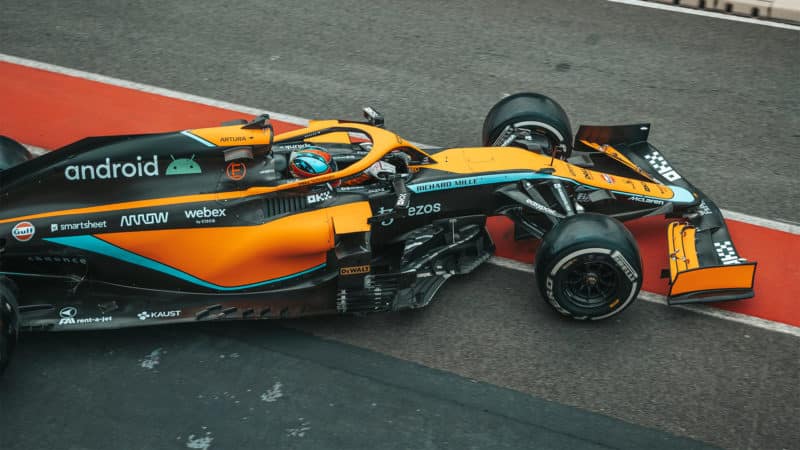
Herta is likely to take part in a FP session as one of McLaren’s designated drivers later this season
McLaren
“I felt comfortable right away. The biggest thing was putting a lap together. I felt like I got to the limit about midway through the day. But that was just separate corners being put together. The end of the second day I was pretty confident putting the laps together, low fuel and high fuel and everything in-between. But it took a while for sure.”
As is usual for such tests he was given plenty of opportunity to play around with settings, as well as different fuel loads.
“We were able to go through a lot of different things, a lot of different balance changes mechanically, aerodynamically, with the car. And then inside the car itself I got to play with all the tools, diff settings and all that sort of stuff.
“It was pretty cool to see the balance changes and what you can do with the car just inside the car, which is quite a bit more than what we’re able to do in the IndyCar. So yeah, it was awesome. If you have a problem in one corner, you can adjust it at the flick of a finger.”
The team didn’t make any lap times public, but obviously Herta was able to make his own comparisons with last year’s Grand Prix, within the constraints already mentioned.
